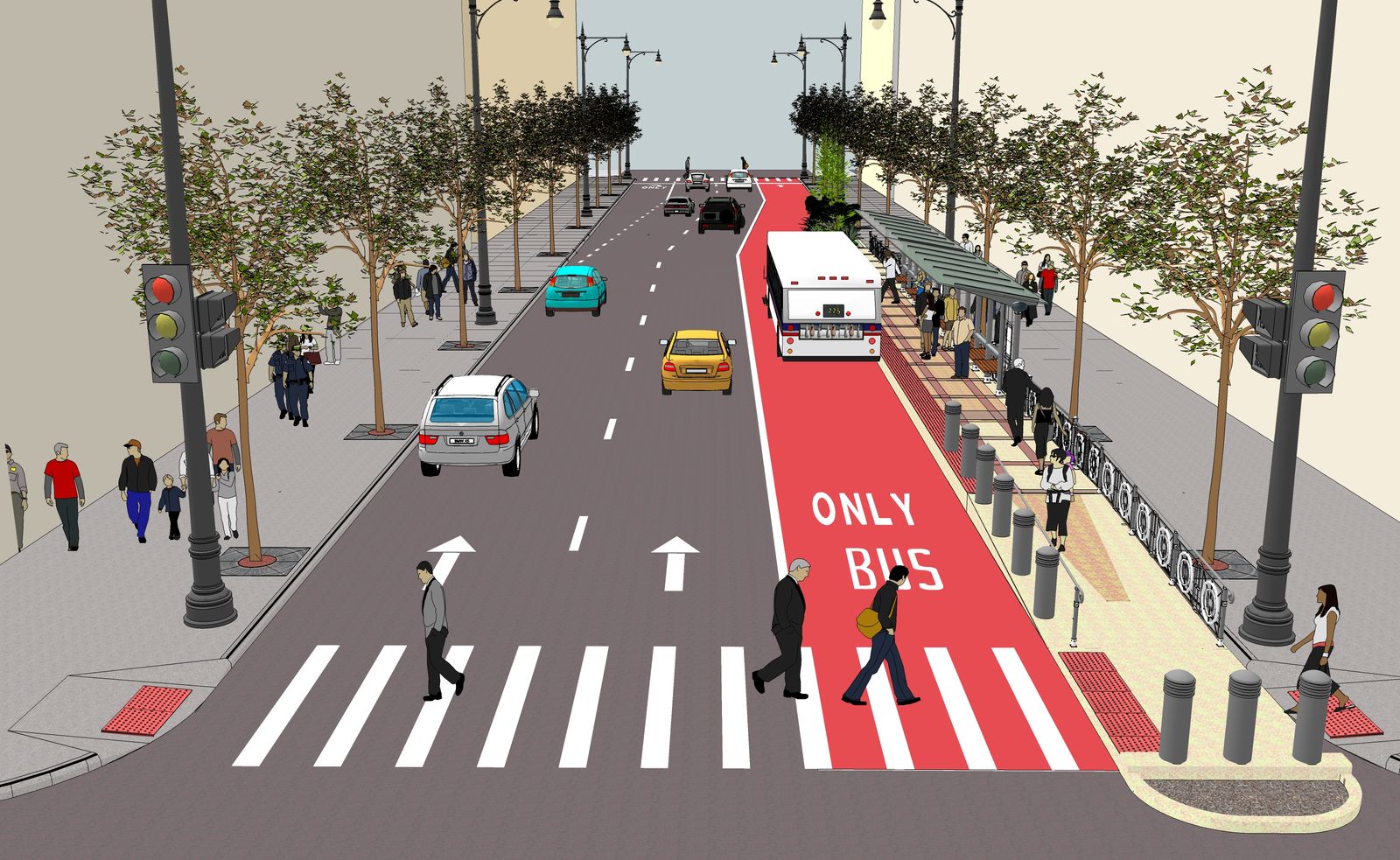Notes on the streetcars vs buses debate
September 3rd, 2018
It's a controversial question whether streetcar (also known as trams, trolleys) or bus rapid transit systems (BRT) are a better investment to solve cities' challenge of offering short-distance transit options. The two offer similar stop spacing, and both share the road with cars. However, they differ greatly in their cost structure, flexibility, and public image. Some notes on the subject...
The argument for buses
Buses are much more cost-effective.
- An alternatives assessment in Washington D.C. compared an extension westward from the H Street line to Georgeton. It found:
- Construction costs of the bus line were ~2/3 that of the streetcar, and ongoing maintenance was ~1/3. (The streetcar option would cost $348 million to build, with annual costs of $9.1 million. The "premium bus" route which in some places would have a dedicated lane would cost $214 million to build, with annual costs of $3.3 million.)
- Streetcars last longer. In a recent Portland plan, streetcars cost $3.5 million per vehicle and last 30 years; buses cost $430,000 per vehicle, but last only 15 years. The amortized costs are $117 thousand and $29 thousand per year for a streetcar and a bus, respectively.
- The streetcar would move 6-14% faster than the bus, and it can carry more riders per trip.
- Rachel Dovey of Next City described streetcars as the "Lululemon yoga pants or iPhone Whichever—a Whole Foods version of public transit serving Yuppie developers and tourists more than residents who actually need to get around".
Buses are far more flexible and in turn much lower risk.
- A bus system can be introduced, adjusted, and removed far more cheaply and easily than streetcars. If transit need declines or shifts to a different neighborhood, it is very difficult to adjust streetcar lines along with that demand. A streetcar system can accomodate only critical changes. In contrast, buses can iteratively adjust their routes according to need.
- Introduction of a bus system requires less buy-in from the community, because their construction is much less intrusive and permanent than fixed track streetcars.
Streetcar tracks in the road are a hazard for cyclists.
"Where a streetcar is faster or more reliable than the bus route it replaced, this is because other improvements were made at the same time -- improvements that could just as well have been made for the bus route," notes public transit consultant Jarrett Walker. For example, streetcar projects often replace bus pullouts with island platforms, which solves the problem of the public car merging back into traffic. However, this street design change could just as easily and more cheaply be made for existing bus routes without entirely replacing the existing bus infrastructure. He notes that packaging the improvements as a part of an exciting new streetcar project can be a good strategy for pushing them through, but they are "logically independent".

The argument for streetcars
Positive cultural associations and aesthetics.
- Streetcars offer a smoother and quieter ride than buses.
- Steel tracks make it easy to find stops and to see where the streetcars are headed. This is particularly comforting for newcomers to a city.
- Fixed tracks make the entire experience feel more predictable and controlled than buses.
- It's hard to deny that streetcars are cute, especially relative to buses. Riders love the historical aesthetic, and streetcars don't have the stigma that buses carry for serving typically lower income communties. Blumenauer explains that streetcars play to people's "nostalgia for a slightly different time".
- Opponents argue that these aesthetic characteristics are trivial and petty. However, transit officials are always looking for ways to make public transit more attractive for middle class commuters who overwhelmingly depend on cars even for short distances within most American cities. The comparative comfort and friendliness of streetcars shifts ridership from automobiles to public transit more effectively than stigmatized buses. If widely adopted, this could hugely decrease congestion and the environmental impacts of Americans' dependence on cars, which many argue is worth the extra cost.
"People who wouldn’t get on a bus at gunpoint will take the Metro. And the streetcar’s even friendlier because it’s aboveground."
– Earl Blumenauer, Portland's former commissioner of public works
Streetcars may promote economic development more effectively.
- A 2008 report by Portland's transpit department found that developers built out 90% of the allowable density within one block of the streetcar route, while they built out just 43% on properties three or more blocks from the route.
- Before Portland's line was built through the central business district (CBD) in 1997, just 19% of development occurred within a block of today's streetcar lines. Today, 55% of development within the CBD occurs along that streetcar corridor.
- A D.C. planning study found an expected 5-12% increase in property values along proposed streetcar corridors. However, the report notes this also posed "the possibility of dislocation [in] neighborhoods with lower household incomes and higher propotions of renters". Streetcar proponents argue that increased demand will be balanced by new development, but the density regulations featured by most American cities are sure to offset this phenomenon in certain neighborhoods, resulting in increased rental prices.
Keep in touch!